For the past two years, Apple’s standard iPhones have felt like awkward compromises, doing little more than bringing over features from their pro-level predecessors without adding anything significantly new to the mix. This year, everything has changed.
With the release of the Apple iPhone 16, Apple’s 2024 iPhone lineup is back in unity for the first time since at least 2021. Unlike the Dynamic Island and Action button in previous years, Apple hasn’t artificially limited features like the new Camera Control to the iPhone 16 Pro models. The balance between the standard and pro lineups has been restored, with the higher-end models differentiated only by truly Pro-level features and not mere design and user interface aspects. Mix in some unique new design changes, and the iPhone 16 feels like an iPhone that can stand on its own rather than being a third wheel.
With so many fun improvements in this year’s model, you may wonder where that leaves the iPhone 15. Last year’s model lacked an Action button and has a processor that’s now two generations behind, so is it still a good choice in today’s iPhone landscape? Perhaps more significantly, is the iPhone 16 worth the upgrade if you’re holding an iPhone 15 in your hand right now? Let’s dive in and find out.
iPhone 16 vs. iPhone 15: specs
| Apple iPhone 16 |
Apple iPhone 15 |
|
| Size | 147.6 x 71.6 x 7.8 mm (5.81 x 2.82 x 0.31 inches) | 147.6 x 71.6 x 7.8 mm (5.81 x 2.82 x 0.31 inches) |
| Weight | 170 grams (6 ounces) | 171 grams (6.03 ounces) |
| Screen size | 6.1-inch Super Retina XDR OLED (60Hz) | 6.1-inch Super Retina XDR OLED (60Hz) |
| Screen resolution | 2556 x 1179 resolution at 461 pixels per inch | 2556 x 1179 resolution at 461 pixels per inch |
| Operating system | iOS 18 | iOS 17 (upgradable to iOS 18) |
| Storage | 128GB, 256GB, 512GB | 128GB, 256GB, 512GB |
| MicroSD card slot | No | No |
| Tap-to-pay services | Apple Pay | Apple Pay |
| Processor | Apple A18 | Apple A16 Bionic |
| RAM | 8GB | 6GB |
| Cameras | Rear: 48-megapixel primary, 12MP ultrawide
Front: 12MP |
Rear: 48MP primary, 12MP ultrawide
Front: 12MP |
| Video | Rear: Up to 4K at 60 frames-per-second (fps), FHD at 60 fps, and 240 fps for slow motion
Front: Up to 4K at 60 fps |
Rear: Up to 4K at 60 fps, FHD at 120 fps, and 960 fps for slow motion
Front: Up to 4K at 60 fps |
| Bluetooth | Yes, Bluetooth 5.3 | Yes, Bluetooth 5.3 |
| Ports | USB-C | USB-C |
| Biometrics | Face ID facial recognition | Face ID facial recognition |
| Water resistance | IP68 | IP68 |
| Battery | 3,561mAh
27W fast charging 25W MagSafe charging 15W fast wireless charging 4.5W reverse wireless charging |
3,349mAh
27W fast charging 15W MagSafe charging 15W fast wireless charging 4.5W reverse wireless charging |
| App marketplace | Apple App Store | Apple App Store |
| Network support | 5G | 5G |
| Colors | Black, white, pink, teal, ultramarine | Black, blue, green, yellow, pink |
| Price | From $799 | From $799 |
| Available from | All major offline and online retailers | All major offline and online retailers |
iPhone 16 vs. iPhone 15: design

It shouldn’t come as a big surprise that the iPhone 16 retains most of the same design elements of the past few generations as Apple has seemingly settled on the flat-edged style that began with the 2020 iPhone 12. Nevertheless, the iPhone 16 changes things up in at least one interesting way.
Specifically, while the dimensions of the iPhone 16 are identical to those of the iPhone 15 down to the millimeter, and the weight is essentially the same, the camera layout is a whole new ballgame — although perhaps it’s more accurate to say it’s a return to an older one. The cameras moved back to a tandem vertical arrangement from the iPhone 12 era, but the camera bump is an even bigger throwback that’s more reminiscent of what we saw on the iPhone XS. A pill-shaped cutout encloses the two cameras, while the LED flash sits off to one side.

It’s a classier and more elegant look compared to the big square camera bump that always seemed to take up more space than needed to hold the dual-camera array on Apple’s non-Pro models. It also gives those standard models a look that sets them apart as unique devices in their own right rather than being second-class citizens to their iPhone Pro counterparts.

The other welcome change to this year’s iPhone 16 is a selection of more saturated and vibrant colors. Apple introduced a new color-infused glass to last year’s iPhone 15 models, but only in mostly weak pastel shades. Several reports earlier this year suggested Apple has improved the process, and the result appears to be deeper and richer colors. While it’s a matter of taste, if you want a blue that actually looks blue instead of borderline white, the ultramarine iPhone 16 doesn’t disappoint, and the new teal and pink options are similarly fun.
The sides of the iPhone 16 also show two key differences compared to previous models, with last year’s iPhone 15 Pro Action button replacing the venerable ring/silent switch on all this year’s models. There’s also Apple’s new Camera Control on the lower right side. We’ll talk more about those later.
The durability of the iPhone 16 also improves slightly over the iPhone 15 thanks to the newer Ceramic Shield glass on the front. However, the iP68 rating remains the same, meaning the phone is rated for immersion in 6 meters of water for up to 30 minutes.
iPhone 16 vs. iPhone 15: display
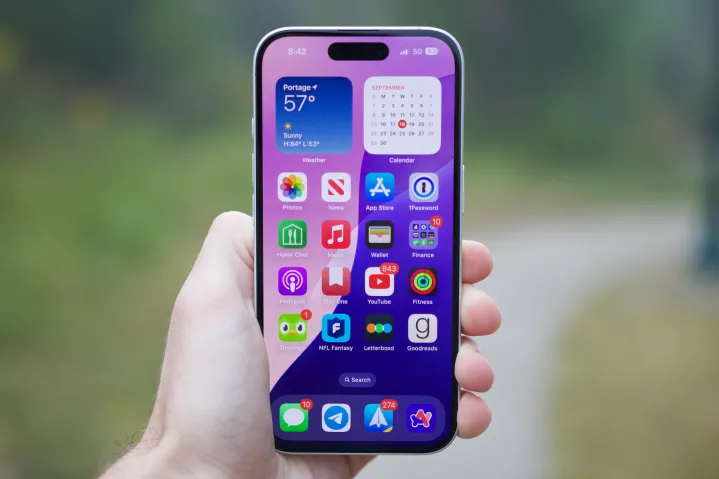
If you were hoping for massive display improvements in this year’s iPhone 16, we have bad news. It has what is essentially the same Super Retina XDR display as last year’s iPhone 15, which hasn’t been meaningfully improved since the iPhone 12 switched to OLED in the first place.
That’s not to say it isn’t a great screen, but some folks will be understandably disappointed by Apple’s choice to stick with a 60Hz refresh rate on its standard models. Nevertheless, it still offers crisp text with a 460 pixel-per-inch (psi) density and HDR support with vibrant colors.
The iPhone 16 retains the 2,000-nit peak outdoor brightness introduced on last year’s iPhone 15. The most significant change is its ability to drop brightness as low as a single nit so it won’t overpower your eyes in a dark room. Other than that, it’s the same display.
iPhone 16 vs. iPhone 15: performance and battery
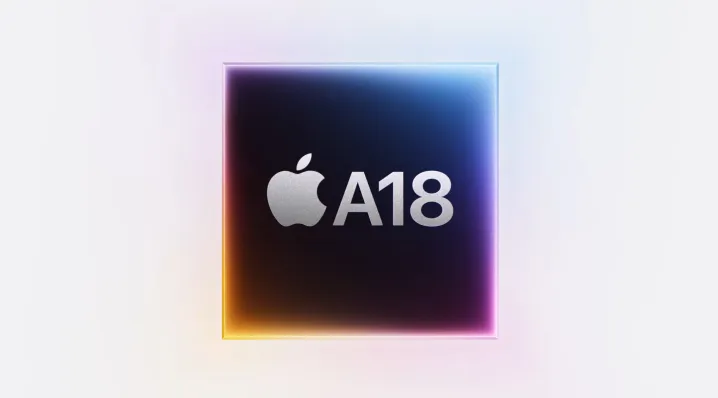
If there’s one groundbreaking improvement in this year’s iPhone 16, it comes from Apple’s decision to shake off its recent trend of using year-old chips in its standard iPhone models.
Before the iPhone 14, every year’s iPhone model mostly shared the same A-series chips; the iPhone 13 version of the A15 had one less GPU core than its iPhone 13 Pro counterpart, but even that was an aberration. However, when the iPhone 14 came along, Apple split the deck, using the prior year’s iPhone 13 Pro chip in that standard model and reserving its new A16 Bionic for the iPhone 14 Pro. That repeated last year with the iPhone 15 getting the A16, while the iPhone 15 Pro moved on to the much higher-performance A17 Pro.
Thankfully, that ends with this year’s A18 chips, and it also means that the iPhone 16 has a massive leap in performance over its predecessor since it’s skipping two generations ahead. Apple is still using slightly different chips for its standard and pro models — an A18 and an A18 Pro — but they’re the same class of silicon, with the primary difference being an extra GPU core in the A18 Pro, similar to the A15 chips of the iPhone 13 era.
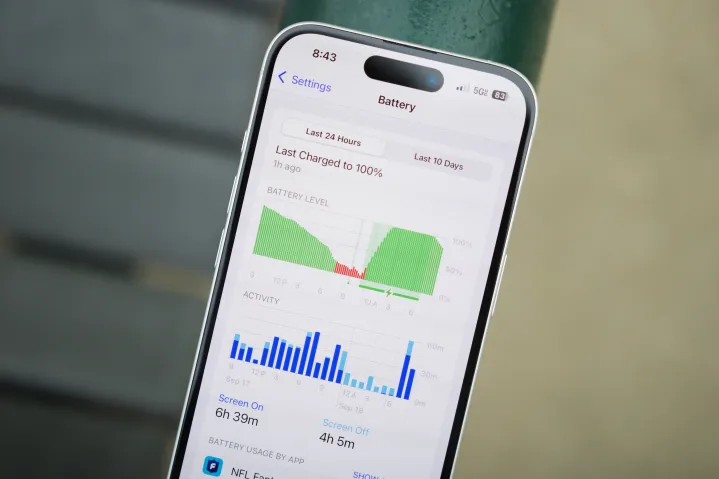
Apple touts the new chips as ready for its Apple Intelligence AI features — the 16-core Neural Engine is twice as fast at handling machine learning models — but the A18 also packs in enough power to bring AAA console gaming to the standard iPhone. The hardware-accelerated ray tracing from last year’s A17 Pro is here, offering noticeably faster frame rates, and Apple claims the five-core GPU is 40% faster than that of the iPhone 15 and twice as fast as the iPhone 12’s.
Will you notice that performance if you’re not gaming or using AI? Probably not, but the A18 chip brings one other advantage to the table: efficiency. Combined with a bigger battery and improved power management in iOS 18, Apple promises the iPhone 16 can deliver two hours more video playback time on a single charge. That’s been borne out in our testing, where the iPhone 16 got us through an entire day without needing a midday top-up.
Apple has also improved wireless charging speeds to support 25-watt charging, although this comes with the usual asterisk. You’ll need to buy Apple’s newest 25W MagSafe charger to support these faster speeds, which promise to top up your iPhone just as quickly as a wired charger. Considering that every Android handset maker has been doing the same for years, it’s hard to see the need to invest in a proprietary charger as a deal-breaker. Standard Qi2 chargers can only deliver 15W right now, as that’s the maximum supported by the new standard. Older Qi chargers remain limited to the same 7.5W speeds on the iPhone 16 as on every other iPhone model.
iPhone 16 vs. iPhone 15: cameras

Apple has a new name for its primary camera in this year’s iPhone lineup — the 48-megapixel Fusion — but that may be the most significant change to the primary camera hardware over last year’s iPhone 15. While Apple likely has an improved sensor under the hood, the raw specs remain the same: a 48MP sensor with an f/1.6 aperture that can capture 24MP and 48MP photos using computational photography.
The “Fusion” branding is Apple’s way of highlighting how the primary camera can do double-duty as both a 1x and 2x lens thanks to the pixel-cropping technique it debuted with the iPhone 14 Pro two years ago. However, it does get an anti-reflective coating that should help reduce lens flare.
Meanwhile, the ultrawide camera retains its 12MP sensor, but increases the aperture to f/2.2, letting in 2.6x more light and gaining autofocus capabilities.
Don’t let those specs discourage you, as Apple has added some Pro-level features to the iPhone 16. These include the macro photo capabilities introduced on the iPhone 13 Pro, including macro video recording with slo-mo and time-lapse, plus 4K Dolby Vision video recording and Spatial videos and photos. The iPhone 16 also gains a wind noise reduction feature when recording video and a new Audio Mix to help balance out foreground and background noise.
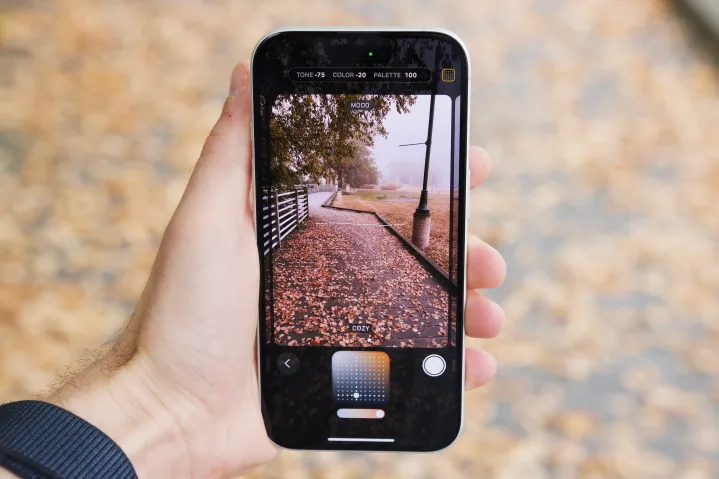
The other significant computational photography improvement in this year’s iPhone 16 is a whole new generation of Photographic Styles that go deeper into the image pipeline and can better factor in things like skin tone, color, highlights, and shadows in real time when making adjustments. There are now 15 styles to choose from instead of four, and they can be applied during capture. However, what’s especially great is that, unlike the previous Photographic Styles that were baked into the images, these are non-destructive and can also be changed after the fact while editing in the Photos app. We think they’re a really fun new twist that makes a much bigger difference than the core camera improvements.
iPhone 16 vs. iPhone 15: software and updates
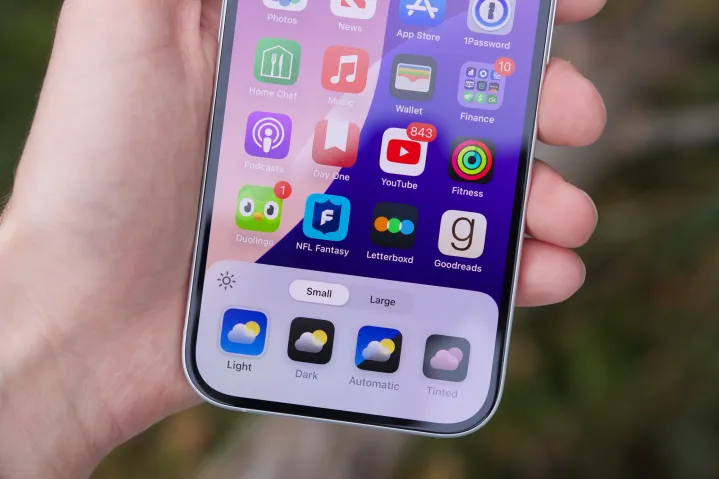
The iPhone 15 and iPhone 16 can both run iOS 18; the iPhone 16 ships with it out of the box, while the iPhone 15 can get it as a free update.
For the most part, iOS 18 will function identically on both devices, putting them on par in terms of software features. The only significant differences are new buttons like the Action button and Camera Control.
However, the two iPhones will diverge more when iOS 18.1 ships later this month on October 28 with Apple Intelligence support. The iPhone 16 can handle that, while the iPhone 15 can’t. That’s technically still a hardware difference, although it may not feel like one to the casual user. That gap will increase even more as subsequent iOS 18 point releases add more Apple Intelligence features. Other subtle changes will highlight the presence of Apple Intelligence, such as a different interface that comes up when activating Siri.
This won’t be a big deal if AI features aren’t your cup of tea. It’s also worth noting that it won’t matter to folks outside the U.S. and other English-speaking countries until sometime next year, as Apple Intelligence is only launching in a few localized English languages over the next few months.
For software updates, it’s fair to say that the older iPhone 15 will see the end of its update life slightly ahead of the iPhone 16, but that’s likely years away for either model. Considering that iOS 18 still supports the 2018 iPhone XS and iPhone XR, it’s a safe bet both models will make it to at least iOS 23.
iPhone 16 vs. iPhone 15: special features

As odd as it sounds, the marquee feature of this year’s iPhone 16 lineup is a button. All four iPhone 16 models feature a new Camera Control on the lower-right side, below the side button, and while we found it took some time to get used to it, it’s a lot of fun once you do.
As the name suggests, this button opens the camera app and takes pictures, but there’s more to it than just those basic functions. It also features a capacitive touch surface that can be used to adjust other settings, like a touch-sensitive scroll wheel. In the built-in camera app, these are exposure, depth, zoom, camera field-of-view, Photographic Styles, and tone. However, third-party apps can also use the Camera Control, with developers defining their own functions.
The Camera Control is also lined up to trigger Visual Intelligence, a new feature that won’t be available for the iPhone 16 until later this month with the debut of iOS 18.1. While a single press of the Camera Control will open your camera app of choice, holding the button down will trigger a new AI feature that will let you use your iPhone 16 camera to look up more information on real-world objects, whether that’s reviews for a restaurant or the breed of a dog walking by.
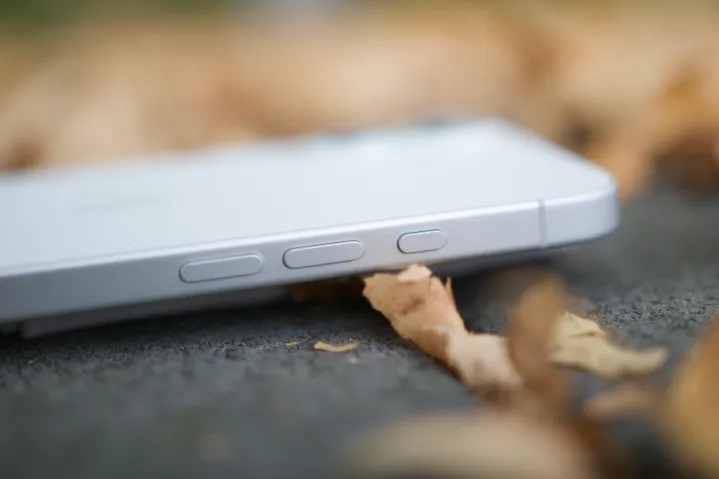
The iPhone 16 also gains the Action button that replaced the ring/silent switch on last year’s iPhone 15 Pro. That’s a benefit over the iPhone 15, just like it was on last year’s Pro model. It works just the same, letting you use it to trigger different built-in functions or even launch shortcuts.
When Apple Intelligence arrives on October 28, the iPhone 16 will be able to proofread and rewrite text and summarize notifications, messages, and audio recordings (including those made from phone calls, which is a new feature coming to all iPhone models in iOS 18.1). Other Apple Intelligence features will appear over subsequent iOS 18 point releases, including AI image generation, ChatGPT integration, and a more intelligent and personalized Siri.
iPhone 16 vs. iPhone 15: price and availability

The iPhone 16 can be purchased directly from Apple and most other major retailers and carriers — and the good news is that Apple still hasn’t increased the price. It starts at the same $799 for 128GB of storage as the iPhone 15 did when it launched last year, and you can take it up to 256GB or 512GB storage for $899 and $1,099, respectively.
As usual, Apple is still selling last year’s iPhone 15 at a lower price, with the base 128GB model selling for $699. Larger storage capacities are still available at the same relative price points — $799 for 256GB or $999 for 512GB — which could make it a tough call whether to opt for more storage or the newer iPhone 16.
iPhone 16 vs. iPhone 15: Should you upgrade?

If you’re shopping for a new iPhone this year or upgrading from a much older model, there’s little doubt the iPhone 16 is the one to buy. Apple has perhaps done the iPhone 16 a disservice by focusing too much on the new Apple Intelligence features, as there’s a lot to recommend here even if you don’t care about AI stuff.
The new design and saturated colors are the best we’ve seen in years. The Camera Control button is useful and a lot of fun, as is the Action button, which was a Pro-exclusive feature last year. There are some meaningful camera improvements, particularly with the new Photographic Styles. The A18 chip is a giant leap forward in performance for a standard iPhone and means you’ll be ready to handle any game the App Store can throw at it.
Perhaps most significantly, this is the first time in at least three years that we’ve had a non-Pro iPhone that hasn’t felt like an afterthought. Not only does it pack in the same class of processor and feature the same physical controls, but the new design makes the standard model feel like it finally stands on its own as a viable and powerful alternative to the iPhone 16 Pro.




